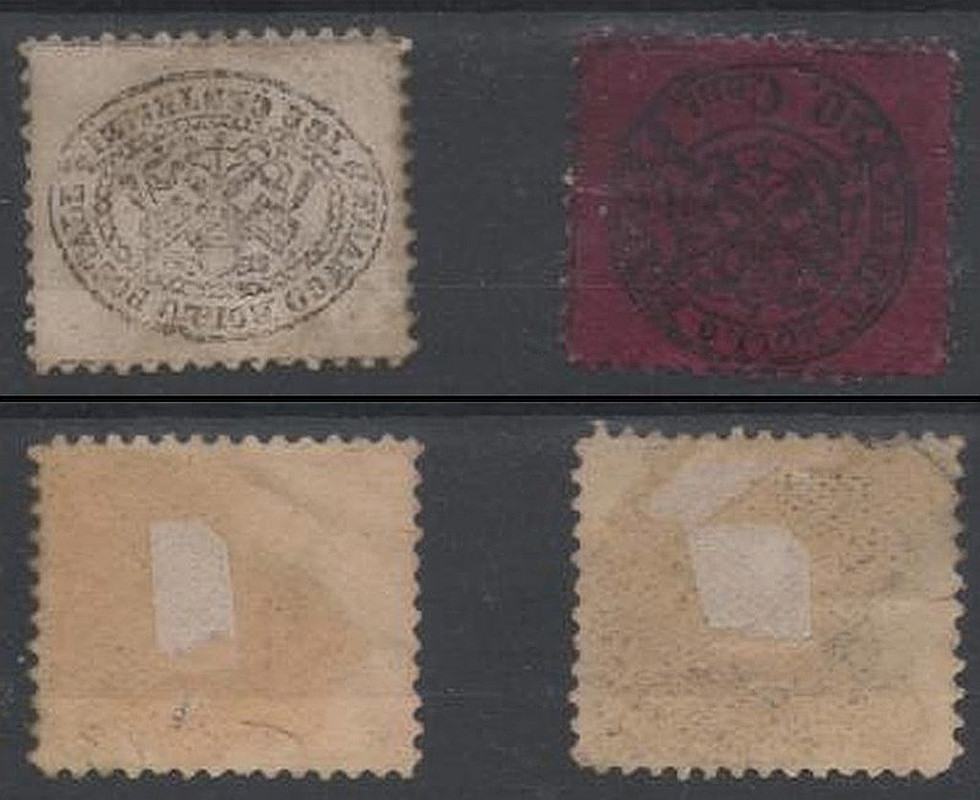codeye
Member  Inactive
Inactive
Posts: 75 
|
Post by codeye on Mar 3, 2014 8:17:41 GMT
Here are scans of a couple of what I think are Prussians, not my area of interest but am curious to know if they are worthless forgeries or the real thing, I hope the scans suffice to get an opinion.
Scans are at 600dpi. I tried to edit and make them 200% larger but didnt work to well.
They were found in the bottom of a box in a glassine envelope with some Victorian revenues I bought last Summer.
[Removed broken image links]
|
|
|
|
Post by stoltzpup on Mar 3, 2014 13:29:47 GMT
Roman States, Scott 20 (upside down in pic)and 23 (can't see it well). Many private printings and forgeries.
|
|
|
|
Post by classicalstamps on Mar 3, 2014 13:30:30 GMT
They are from The Papal State, not Preussia.
99% of these stamps are reprints. It is somewhat difficult to tell the difference.
You need to scan them at least at 600dpi (not take a photograph) if you want any opinion besides: assume they are reprints.
|
|
codeye
Member  Inactive
Inactive
Posts: 75 
|
Post by codeye on Mar 3, 2014 18:12:33 GMT
Thank you guys, they are scans @ 600dpi, but none the less my assumptions are what I thought and what you told me.
|
|
tomiseksj
Moderator  Woodbridge, Virginia, USA
Woodbridge, Virginia, USA
Posts: 6,385  What I collect: Worldwide stamps/covers, Cinderellas, Ohio Prepaid Sales Tax Receipts, U.S. WWII Ration ephemera
What I collect: Worldwide stamps/covers, Cinderellas, Ohio Prepaid Sales Tax Receipts, U.S. WWII Ration ephemera
|
Post by tomiseksj on Mar 3, 2014 21:36:08 GMT
You may find it easier to manipulate the images if you crop all of the extraneous material. This is preferably done prior to scanning but can also occur after the scan. Using the free Irfanview program, I've taken two of your images, cropped and then enlarged them (800x600) to provide an example of what I'm suggesting.  |
|
|
|
Post by classicalstamps on Mar 3, 2014 23:02:05 GMT
If you want to see anything, high-resolution images are necessary. Resizing/scaling/compressing will often ruin the subtle details needed for working with forgery detection. Here is a genuine example of one of your stamps:  |
|